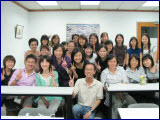- Home
- Learn Japanese Language FAQ
- Which is the main action in Japanese verb stem of masu form plus nagara sentence?
Which is the main action in Japanese verb stem of masu form plus nagara sentence?
by Ann
(Perth, Australia)

Which is the Main Action in ながら Sentence?
I have just learnt the nagara sentence from my Japanese class. While I know the sentence means doing two things at the same time, I don't know whether there is a main action or secondary action. Can you please explain?
Reply:
In Japanese, the last verb in a sentence is always the main action. So in short, the answer to your question is that the main action for Japanese verb stem of masu form plus nagara sentence is the second verb in the sentence.
Take a look at the sentence pattern for the nagara sentence...
Verb1(Stem of masu form) ながら Verb2
In the sentence pattern, Verb2 is the main action while Verb1 is the sub-action.
Example 1
新聞を読みながら、ご飯をたべています
shinbun wo yominagara, gohan wo tabete imasu
Meaning: While I am having a meal, I am reading a newspaper.
In the above case, having a meal is the main action while reading newspaper is the sub-action.
Example 2
ご飯を食べながら、新聞を読んでいます
gohan wo tabenagara, shinbun wo yonde imasu
Meaning: While I am reading a newspaper, I am having a meal.
In this case, reading newspaper is the main action while having a meal is the sub-action.
Example 3
テレビを見ながら、宿題をしました
terebi wo minagara, shukudai wo shimashita
Meaning: I watched TV while doing my homework.
Main action: homework, sub-action: watching tv. (though I doubt you can really do that)
Example 4
歌いながら、歩いています
utainagara, aruite imasu
Meaning: I sing while walking.
Main action: walking, sub-action: singing.
Example 5
姉は本を見ながら、料理を作りました
ane wa hon wo minagara, ryouri wo tsukurimashita
Meaning: My elder sister skimmed the book while making the dish.
Main action: made the dish, sub-action: skimming the (recipe's) book.
In normal case, you will say 本を読む (hon wo yomu). You read from beginning to the end and understand the book. However, for dictionary, encyclopedia, cook book or recipe's book (for this case), etc, you never read but just skim through, look up what you want and never read from beginning to the end.
Therefore when you are skimming, browsing or referring, you should use 見る (miru) instead of 読む (yomu).
Related Page
Stem of masu-form in past tense of Japanese
Hope this helps,
Kia Leng
Comments for Which is the main action in Japanese verb stem of masu form plus nagara sentence?
|
||
|
||
|
||
|
||
|
||
|
||
|
||







